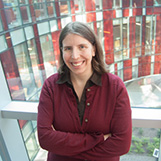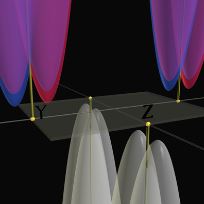2019 MD Day Image Gallery
- Details
- Created: Wednesday, May 01 2019 10:18
- Last Updated: Wednesday, May 01 2019 10:43
- Hits: 4076

 UMD Appoints Renowned Physicist to Lead Quantum Research and Education The University of Maryland has named Gretchen Campbell, an internationally recognized researcher and national leader in advancing the field of quantum science, as associate vice president for quantum research and education, effective July 13, 2025. In this newly established position, Campbell will collaborate with faculty,… Read More
UMD Appoints Renowned Physicist to Lead Quantum Research and Education The University of Maryland has named Gretchen Campbell, an internationally recognized researcher and national leader in advancing the field of quantum science, as associate vice president for quantum research and education, effective July 13, 2025. In this newly established position, Campbell will collaborate with faculty,… Read More  UMD Physics Rated #19 in the World The University of Maryland Department of Physics was ranked No. 19 globally in U.S. News & World Report’s list of 2025-26 Best Global Universities. Of U.S. campuses, only three public universities--and 10 overall--ranked higher in physics. "This is a tribute to all of us working… Read More
UMD Physics Rated #19 in the World The University of Maryland Department of Physics was ranked No. 19 globally in U.S. News & World Report’s list of 2025-26 Best Global Universities. Of U.S. campuses, only three public universities--and 10 overall--ranked higher in physics. "This is a tribute to all of us working… Read More  Alumni Honored with NSF Fellowships Physics graduates Jade LeSchack, Elaine Taylor and Jeffrey Wack have received prestigious National Science Foundation (NSF) Graduate Research Fellowships, which recognize outstanding graduate students in science, technology, engineering, and mathematics. This year’s awardees from the University of Maryland’s College of Computer, Mathematical, and Natural Sciences (CMNS)… Read More
Alumni Honored with NSF Fellowships Physics graduates Jade LeSchack, Elaine Taylor and Jeffrey Wack have received prestigious National Science Foundation (NSF) Graduate Research Fellowships, which recognize outstanding graduate students in science, technology, engineering, and mathematics. This year’s awardees from the University of Maryland’s College of Computer, Mathematical, and Natural Sciences (CMNS)… Read More  Hafezi Receives Humboldt Research Award Mohammad Hafezi has received a Humboldt Research Award, which acknowledges his history of impactful research and supports visiting Germany to collaborate with colleagues there. Each year, the Alexander von Humboldt Foundation gives the award, which is supported by the Federal Foreign Office and the Federal Ministry of… Read More
Hafezi Receives Humboldt Research Award Mohammad Hafezi has received a Humboldt Research Award, which acknowledges his history of impactful research and supports visiting Germany to collaborate with colleagues there. Each year, the Alexander von Humboldt Foundation gives the award, which is supported by the Federal Foreign Office and the Federal Ministry of… Read More 
Instructors for physics courses should submit their textbook orders, as well as orders for MasteringPhysics, clickers, etc, via FacultyEnlight. Please contact This email address is being protected from spambots. You need JavaScript enabled to view it. with any questions.

Abstract: Band-edge states in the indirect-gap group-IV metal monochalcogenide monolayers (four-six-enes such as SnS, GeTe, etc.) inherit the properties of nearby reciprocal space points of high symmetry at the Brillouin zone edge. We employ group theory and the method of invariants to capture these essential symmetries in effective Hamiltonians including spin-orbit coupling, and use perturbation theory to shed light on the nature of the band-edge states. In particular, we show how the structure of derived wave functions leads to specific dominant momentum and spin scattering mechanisms for both valence holes and conduction electrons, we analyze the direct optical transitions across the band gap, and expose the interactions responsible for subtle features of the local dispersion relations.